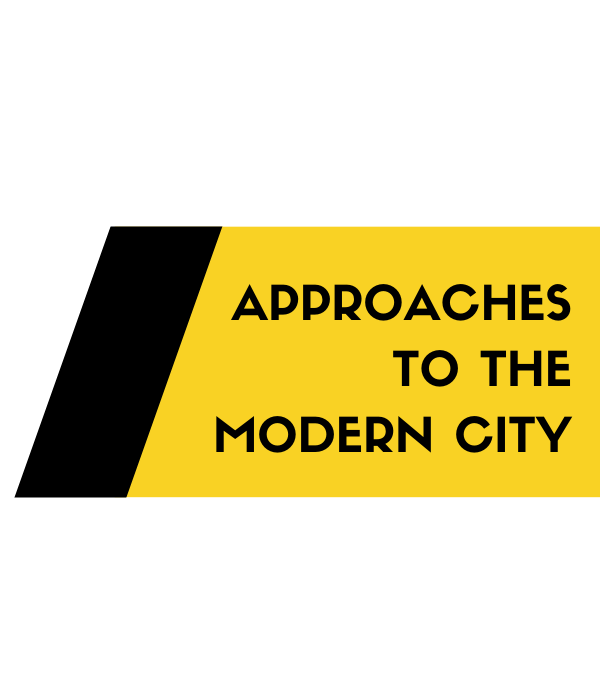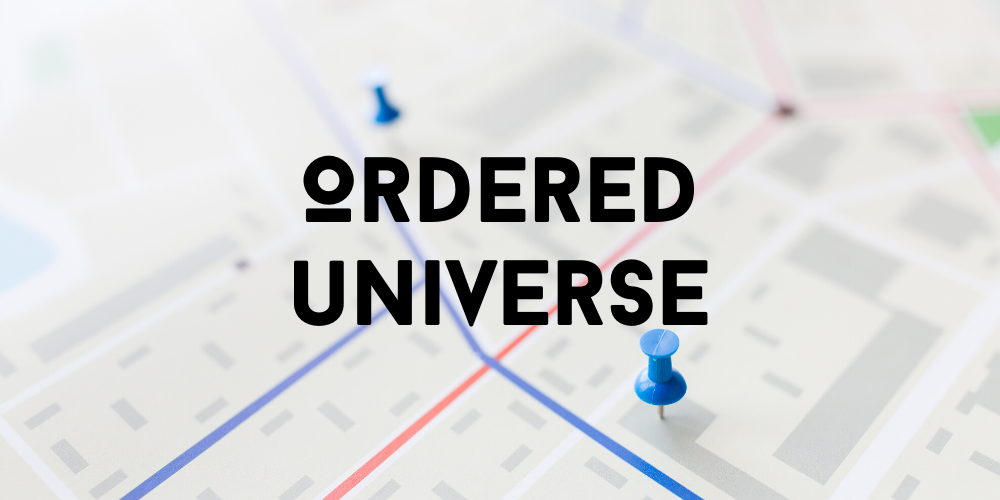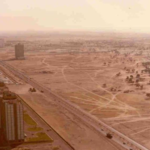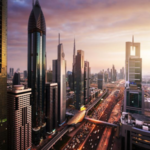By Amanda Lin
Questions
Does Dubai have a single overall plan? When was it made and with what aims? What does Dubai’s development illustrate about the city?
Discussion
Today, Dubai is a city known in every corner of the world, with several structures claiming worldly superlatives, but less than one hundred years ago, it was no more than an unimportant Arabian port village. Dubai, in its present form, prospered under the watchful eye of Sheikh Rashid during the 1960s and Sheikh Mohammed today, who took great lessons from Dubai’s past economic troubles. Krane (2009, vii) argues that the sheikhs “ruled by three principles: what is good for the merchant is good for the village; embrace visitors, no matter what their religion is; and, you cannot win if you do not take risks.” Using money borrowed from other Middle Eastern governments, Sheikh Rashid began to construct infrastructure projects that would cement Dubai as an international marine and aerial hub—namely, the construction of the airport in 1960, the dredging of the Dubai Creek in 1961, and the construction of Port Rashid (Krane 2009). He continued to advance his grandfather’s goal of transforming Dubai into a center for transport and merchants by building an international airport and expanding the capacity of Dubai Creek. In 1959, he commissioned British architect John Harris to draw up a master plan to be implemented and referenced throughout Dubai’s future growth (Elsheshtawy 2004). Harris imagined a Dubai that would sprout from its historic center on Dubai Creek, with an extensive road system, organized zones, and a town center, all of which could feasibly be built with Dubai’s limited financial resources at the time (Elsheshtawy 2004). His vision of the future Dubai was a continuation of the existing city, thoughtfully balancing Dubai’s cultural history with worldly modernizations (Elsheshtawy 2004). The actual growth, however, strayed from Harris’s carefully composed scheme when oil was discovered in 1966, and with this newfound source of income, Sheikh Rashid became more ambitious. Sheikh Rashid’s allocation of his sheikdom’s limited resources was part of a deliberate plan for Dubai’s growth, which included expanding the economy and attracting international attention.
The influx of money from the oil discovered allowed Sheikh Rashid to construct even larger and more conspicuous projects that further boosted the city’s global fame. In the early 1970s, the sheikh poured his money into Port Jebel Ali, a deep-water port that would allow larger ships to dock and further confirm Dubai’s status as an international port (Krane 2009). The port eventually opened in 1979, but was not an immediate success as it was too far away from the city center to be attractive. To stimulate business, Sheikh Mohammed, Sheikh Rashid’s son, converted the area into Dubai’s first free trade zone, which liberated businesses from the 5 percent federal import tax and laws prohibiting majority foreign ownership of a business (Krane 2009). Harris was hired in 1971 to create a revised master plan, which expanded development along Sheikh Zayed Road, a straight highway, towards the newly projected Port Jebel Ali (Andraos and Wood 2013). Most new construction is spread along this 14-lane highway in clusters. The World Trade Centre, funded by Sheikh Rashid, became the first of the many skyscrapers that now dot Sheikh Zayed Road in 1979. Andraos and Wood (2013) describe the road as the artery of the city, transporting growth from the traditional center on Dubai Creek to “New Dubai” by the new Port Jebel Ali. The two ports acted as anchors for the linear, mosaic-like path of development, driven by the sheikhs’ dreams, that would extend along the highway. Sheikh Rashid’s decision to embark on these mega-investments was maligned in Western media, but he shrewdly poured the money discovered in the oil reserves into diversifying the economy, a judgment that would in turn trigger private investment.
Sheikh Rashid built the foundation of Dubai with his many investments in infrastructure and efforts to attract international businesses, but Sheikh Mohammed made Dubai a spectacle. As he explained in his book, My Vision, he wanted Dubai to be not only a global business city, but also the world’s vacation destination (Krane 2009). To execute his vision, Mohammed first encouraged foreigners to stay in Dubai: in 2002, he decreed that foreigners could own property (Krane 2009). This further welcome was especially important in a post-9/11 world, in which Americans and the West generally, expressed hostility to Arabs (Krane 2009). Arabs, who felt increasingly ostracized, turned back towards their own region, investing instead in Dubai. While Sheikh Mohammed continued to fill in the land between the two ports with sprawling clusters of skyscrapers and lucrative free trade zones, he also launched the mega projects that characterize Dubai today, namely the Burj Al-Arab, the man-made islands, and the Burj Khalifa (Andraos and Wood 2013). Each of these three structures was built to claim a superlative—the world’s only seven-star hotel, the largest man-made island, the tallest building in the world—and each was designed by a famous, foreign architect, who attempted to elevate and universalize an aspect of local or Arabian culture (Kanna 2011). The Burj Al-Arab was designed by British architect Tom Wright and endeavored to emulate iconic world city symbols, like the Eiffel Tower and the Sydney Opera House, while still incorporating Dubai’s history as a port city in the sail shape (Elsheshtawy 2004). The Palm Islands, similarly, were imagined by a New Zealand architect in a date palm design, a symbol of life and abundance from the region (Elsheshtawy 2004). These expensive projects constructed an environment of exclusivity in their locations outside of the dense urban context and aimed to reinforce Dubai’s world image as a place unlike any other—the ultimate tourist attraction. Dubai under Sheikh Rashid developed instantly recognizable icons attached to already famous names that propelled the city into the international spotlight.
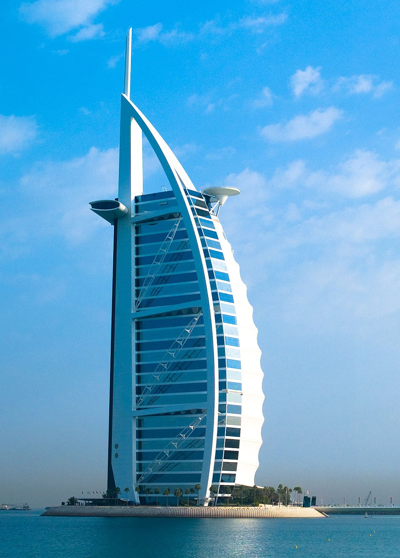
Figure 3: The Burj al-Arab is the only “seven star” hotel in the world, and is built on an artificial island off of Jumeirah Beach. 
Figure 4: The Burj Khalifa, completed in 2009, is the tallest building in the world. 
Figure 5: Dubai’s artificial islands, with the Palm Jumeirah on the left, the Palm Deira on the right, and The World and The Universe in the middle.
Dubai’s development occurred largely in the last century, the product of multiple personal imaginings. Although many urban plans were drawn up by various architects throughout the century, growth was essentially dictated by the whims of the reigning Sheikh. Private investors were often gifted plots of land by the Sheikh, under the condition that they develop the land, because even foreign development was orchestrated by the ruler (Krane 2009). Sheikh Rashid, while ambitious, acted with the more modest goal of making Dubai an international trading city. His son, Sheikh Mohammed, expanded on this goal with his own dream of Dubai, the international destination. Dubai grew too quickly, both in size and population, for an urban plan to predict, but the real reason why the urban plan never panned out was because the goal of the city’s true planners, the sheikhs, was not to create a perfect, ordered city. The sheikhs saw the city of Dubai as a means to realize their ambitions; the history of Dubai was the history of the al-Maktoum family, and asserting Dubai’s superiority in the world was asserting the al-Maktoum’s superiority in the world. Dubai, a seemingly glittering oasis in a barren landscape, was not meant for its people, but rather, for “the gaze of the tourist, the look of multi-national corporations, and the stare of real estate development companies” (Elsheshtawy 2004, 193). The pattern of development—skyscrapers arising randomly from the desert, grouped together for specific audiences—subverted the drafted urban plan, because the drivers of expansion were not focused on planning the spatial and material aspects of the city, but rather encouraging development in any form in order to realize the image of a cosmopolitan, world city—Sheikhs Rashid and Mohammed were not so much trying to transform the desert, but trying to obscure it with a facade that simulated the qualities that complete a city.
Sources
Krane, J. (2009). Dubai: The Story of the World’s Fastest City. London: Atlantic.
Ramos, S., & Rowe, P. G. (2013). Planning Prototyping, and Replication in Dubai. In The Superlative City: Dubai and the Urban Condition in the Early Twenty-First Century. Aga Khan Program at the Harvard University Graduate School of Design.
Andraos, A., & Wood, D. (2013). Peak Urbanism, Micro-Planning, and Other Emergent Realities in Dubai. In The Superlative City: Dubai and the Urban Condition in the Early Twenty-First Century. Aga Khan Program at the Harvard University Graduate School of Design.
Elsheshtawy, Y. (2004). Redrawing Boundaries: Dubai, an Emerging Global City. In Planning Middle Eastern Cities: An Urban Kaleidoscope (pp. 169–199). Routledge.
Kanna, A. (2011). “Going South” with the Starchitects: Urbanist Ideology in the Emirati City. In Dubai, the City as Corporation (pp. 77–104). University of Minnesota Press.
Molavi, A. (2005). Dubai Rising. The Brown Journal of World Affairs, 12 (1), 103–110.
Burj Khalifa. Burj Khalifa. Emaar Properties PJSC. Accessed May 9, 2020. .
